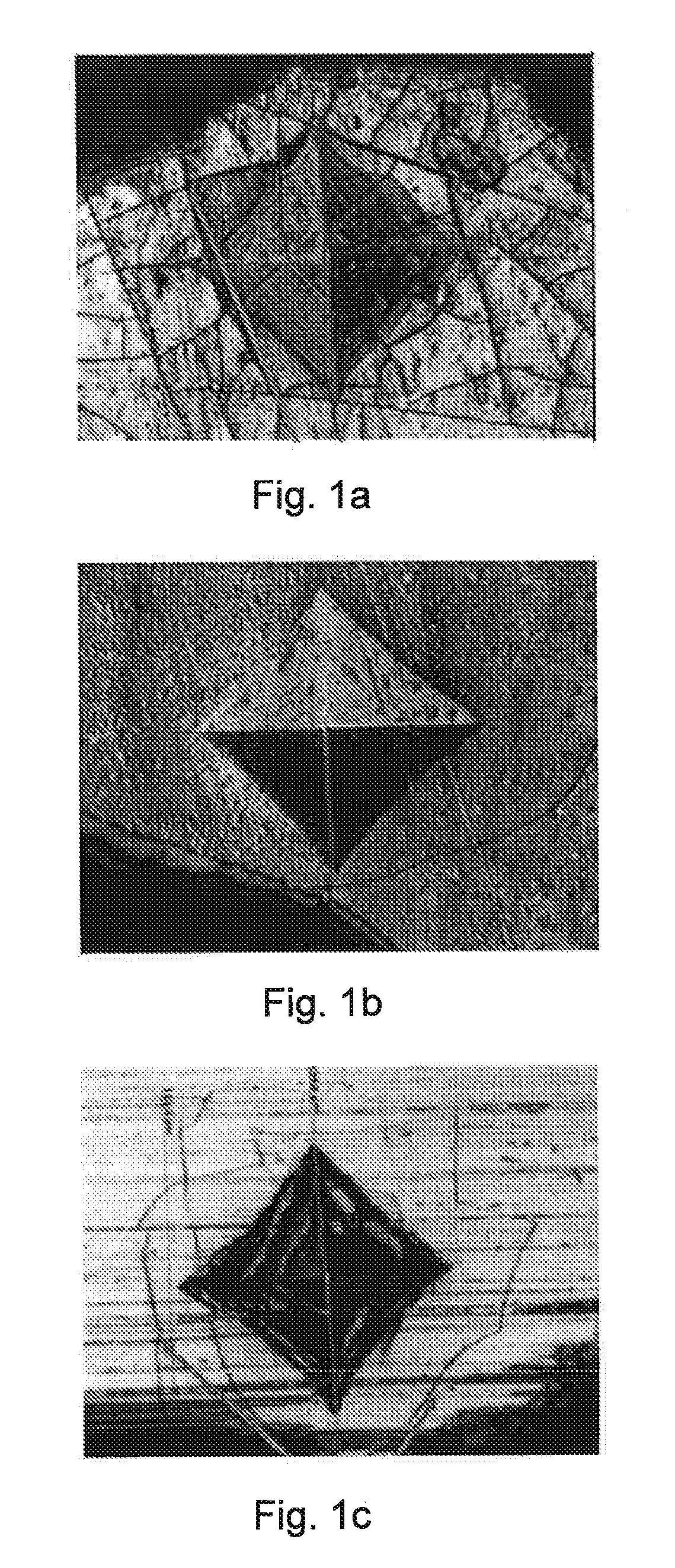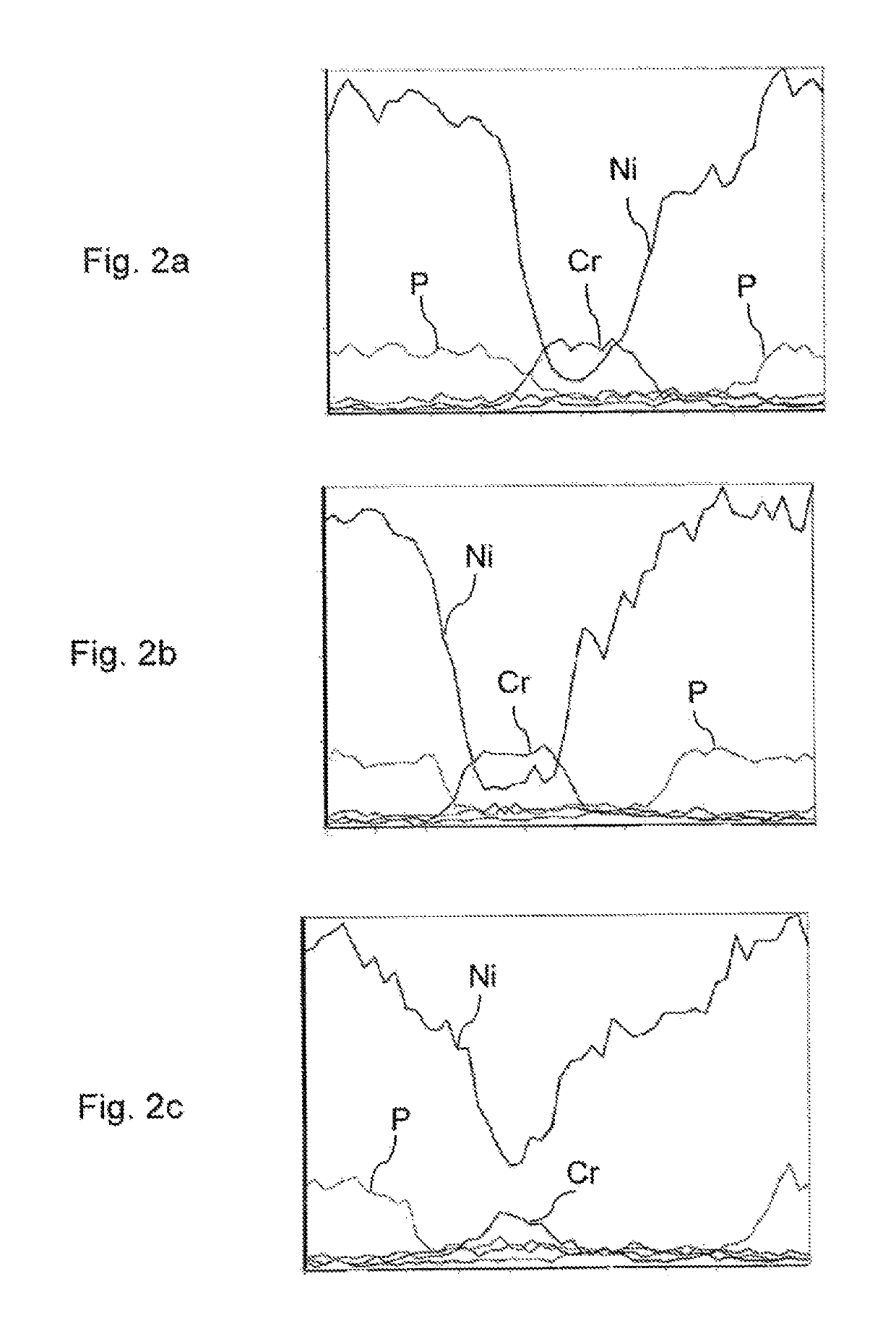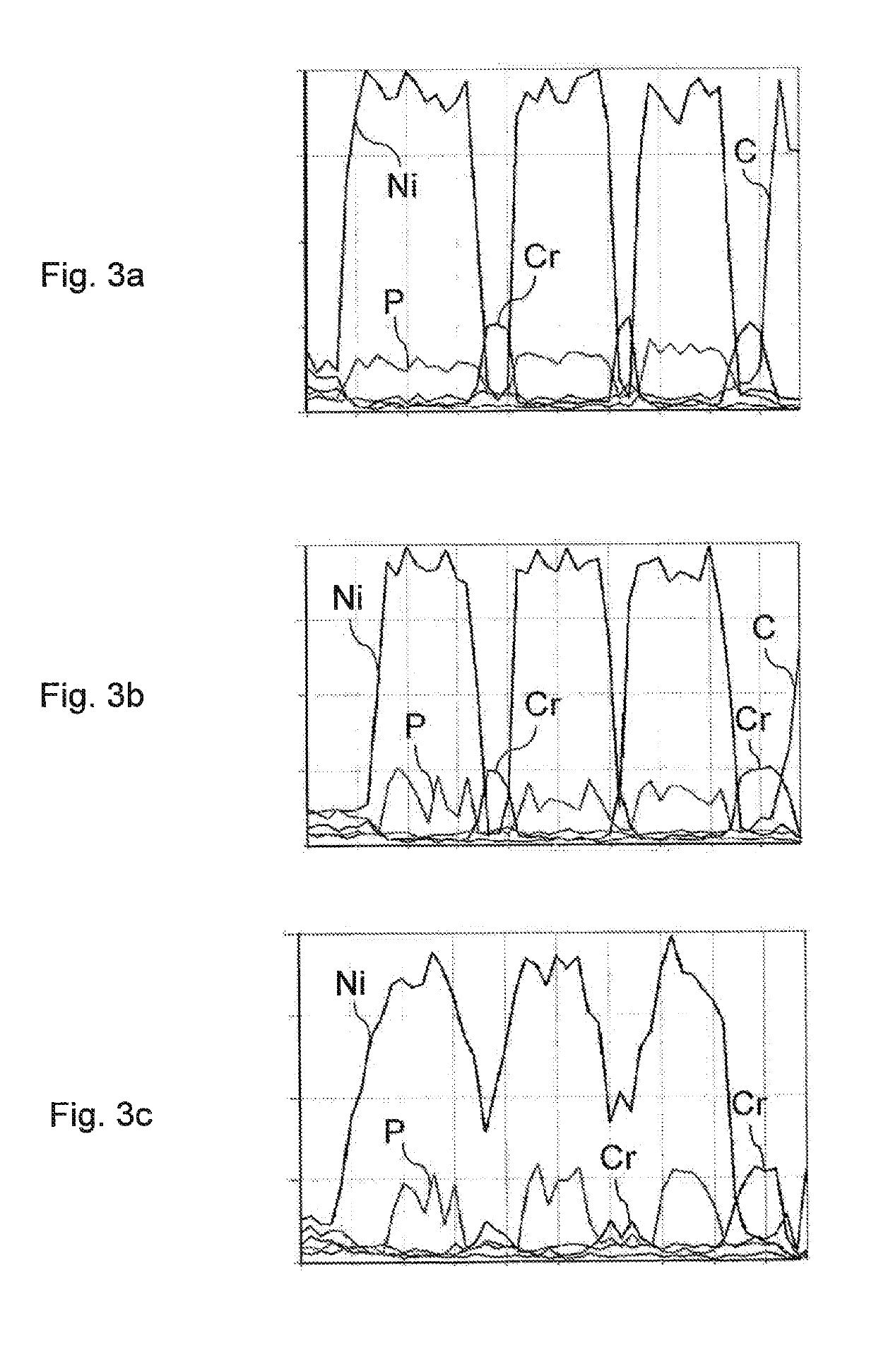Method for producing chromium-containing multilayer coating and a coated object
a multi-layer coating and coating technology, applied in the direction of superimposed coating process, liquid/solution decomposition chemical coating, vacuum evaporation coating, etc., can solve the problem that the chromium plating process of prior art is not capable of producing coatings, industrial scale process giving hard and corrosion resistant chromium deposits through trivalent chromium solution is still missing, and achieves superior wear and corrosion resistance, excellent mechanical and physical properties, and less cracks
- Summary
- Abstract
- Description
- Claims
- Application Information
AI Technical Summary
Benefits of technology
Problems solved by technology
Method used
Image
Examples
example 1
[0067]The properties of a double-layer coating of NiP—Cr—NiP—Cr were compared with the properties of a single-layer coating of NiP—Cr.
[0068]A first test piece was plated with NiP (thickness 8 μm) and Cr (4 μm).
[0069]A second test piece was plated with a first layer of NiP (8 μm), a first layer of Cr (4 μm), a strike layer of sulphamate nickel (2 μm), a second layer of NiP (8 μm), and a second layer of Cr (4 μm).
[0070]The NiP layers were produced by chemical deposition. The Cr layers were electrodeposited on the NiP layer from a trivalent chromium containing bath.
[0071]After coating both test pieces were subjected to similar heat treatment sequences, consisting of first heating step of 30 minutes at 600° C., cooling to room temperature, and second heating step of 60 minutes at 600° C.
[0072]The microhardness of the coated test pieces was measured by Vickers hardness test in micro range using an indenter load of 10 g (HV 0.01). The tests were carried out according to EN-ISO 6507.
[0073]...
example 2
[0078]The influence of heat treatment on NiP—Cr multilayer coating was investigated by comparing the properties of a non-heat-treated multilayer coating with a multilayer coating subjected to a two-step heat treatment sequence.
[0079]Two test pieces were each plated with following layers: a first NiP layer (thickness 5 μm), a first Cr layer (2 μm), a first nickel strike layer (1 μm), a second NiP layer (7 μm), a second Cr layer (3 μm), a second nickel strike layer (1 μm), a third NiP layer (7 μm), and a third Cr layer (3 μm). The layers of nickel phosphorus alloy were chemically deposited. The chromium layers were electrodeposited from trivalent chromium containing electrolyte bath. The nickel strike layers were electrodeposited from sulphamate nickel bath.
[0080]The first test piece was subjected to a heat treatment sequence comprising a first heating step of 30 minutes at 600° C., cooling to room temperature and a second heating step of 60 minutes at 600° C. The second test piece wa...
example 3
[0084]Three test pieces of stainless steel were coated with similar multilayer coatings, comprising: a first nickel strike layer (1 μm), a first NiP layer (7 μm), a first Cr layer (5 μm), a second nickel strike layer, a second NiP layer, a second Cr layer, a third nickel strike layer, a third NiP layer, and a third Cr layer.
[0085]The first test piece was not heat-treated at all. The second test piece was heat-treated in two steps: a first heating step of 30 minutes at 700° C., cooling, and a second heating step of 30 minutes at 400° C. The third test piece was heat treated as follows: a first heating step of 480 minutes at 700° C., cooling, and a second heating step of 480 minutes at 400° C. In other words, the duration of the heating steps in the third test was 16 times as long as the duration of the heating steps in the second test.
[0086]The EDS spectra measured from the coated objects are shown in FIGS. 3a-3c and the SEM micrographs of the same objects are shown in FIGS. 4a-4c. T...
PUM
| Property | Measurement | Unit |
|---|---|---|
| temperature | aaaaa | aaaaa |
| temperature | aaaaa | aaaaa |
| temperature | aaaaa | aaaaa |
Abstract
Description
Claims
Application Information
 Login to View More
Login to View More - R&D
- Intellectual Property
- Life Sciences
- Materials
- Tech Scout
- Unparalleled Data Quality
- Higher Quality Content
- 60% Fewer Hallucinations
Browse by: Latest US Patents, China's latest patents, Technical Efficacy Thesaurus, Application Domain, Technology Topic, Popular Technical Reports.
© 2025 PatSnap. All rights reserved.Legal|Privacy policy|Modern Slavery Act Transparency Statement|Sitemap|About US| Contact US: help@patsnap.com



